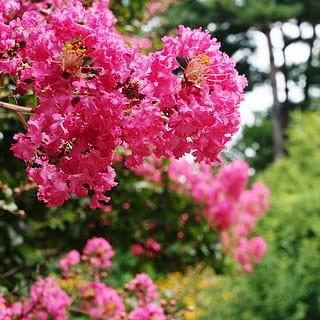
crape myrtle
Lagerstroemia indica 'Houston'
Cycle:
Perennial
Watering:
Average
Hardiness Zone:
6 - 9
Flowers:
Flowers
Sun:
Full sun
Leaf:
Yes
Growth Rate:
High
Maintenance:
Moderate
Salt Tolerant:
Yes
Care Level:
Medium
watering
Crape myrtle (Lagerstroemia indica 'Houston') should be watered deeply and regularly throughout the growing season. Water the soil thoroughly, allowing water to penetrate to a depth of 9-12 inches for best results. During hot summer months, this plant may need to be watered twice a week to maintain its lush foliage. Allow the top 5 cm of soil to dry before watering. In fall, decrease the amount of water given to the plant, allowing the soil to dry before watering again. Avoid over-watering or under-watering the crape myrtle as this can lead to problems.
sunlight
Crape myrtle (Lagerstroemia indica 'Houston') should receive 6 to 8 hours of direct sunlight each day for optimal growth. However, if planted in an area with greater sun exposure, crape myrtle should have some protection from the midday sun. In hotter climates, this protection is necessary to avoid sun damage and leaf burn. Morning and late afternoon sun is ideal so that the plant can absorb the most sun without getting scorched. Make sure to plant this species in a spot that receives at least 4 to 6 hours of direct sun per day. During periods of drought, crape myrtle should also get plenty of water to stay healthy and thrive.
pruning
Crape myrtle (Lagerstroemia indica' Houston') should be pruned annually. Pruning should begin in late winter or early spring before any new buds appear. The goal of pruning is to create a pleasing shape and improve flowering. To keep the shape and size of the tree in check, remove any branches that are too long or are growing outside of the desired form. In addition, prune off any dead, damaged, or diseased branches, as well as any crossing branches that can rub against each other and cause damage or prevent air flow. If any branches are growing lower than the desired canopy height, they should also be pruned back. It is important that any cuts be made in the correct location so they will heal properly.
